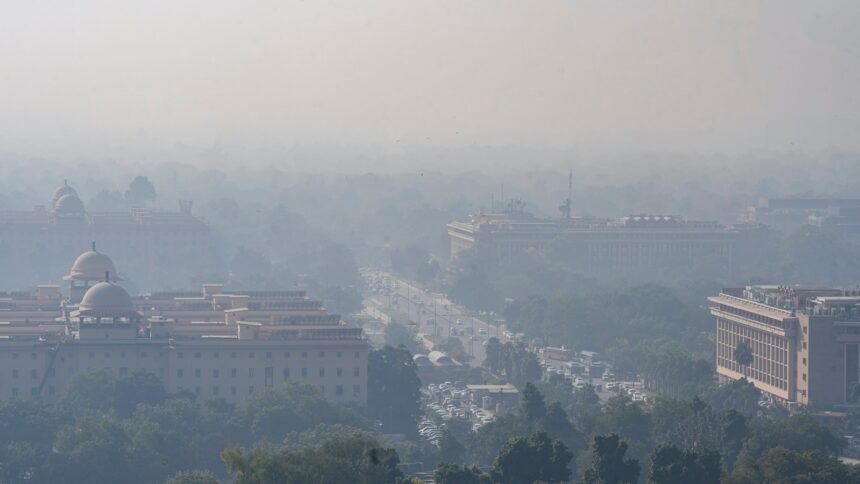The Winter Fog Experiment (WiFEX), launched in 2015 at Indira Gandhi International Airport (IGIA), New Delhi, has completed a milestone — ten years of dedicated research into North India’s dense winter fog and its impact on daily life and aviation safety. “The key aim as to generate high quality observational data and develop a reliable resolution fog prediction model. In the next phase, WiFEX-2 will be expanded to other major airports in North India,” Dr M Ravichandran, Secretary, Ministry of Earth Sciences, GoI said on Tuesday.
Dr Ravichandran along with other officials visited the WiFEX and System for Air Quality and Forecasting Research (SAFAR) control room at the Indian
Institute of Tropical Meteorology (IITM) on Tuesday.
On the occasion a state-of-the-art atmospheric chemistry laboratory as inaugurated and the website of an Early Career Researchers’ Hub for Earth
Sciences as also launched.
Dr Ravichandran later spoke to media persons about ho accurate forecasts under WiFEX have provided significant operational benefits to airlines including reductions in flight diversions and cancellations.
“Based on this success WiFEX is no progressing to its next phase WiFEX- II and these capabilities ill be expanded to major airports in North India so
the advanced instruments can better predict localised fog events at airport runways,” he said.
Led by the Indian Institute of Tropical Meteorology (IITM) under the Ministry of Earth Sciences (MoES), with support from the India Meteorological
Department (IMD) and the National Centre for Medium Range Weather Forecasting (NCMRWF), WiFEX is one of the world’s fe long-term open- field experiments focused solely on fog — an elusive winter hazard that regularly disrupts air, rail, and road transport across the Indo-Gangetic Plain.
What began at IGIA — India’s busiest and most fog-affected airport — has grown into a robust observational network now reaching Jewar Airport, Noida, and Hisar, Haryana, covering key aviation corridors across North India. Over the past decade, WiFEX scientists have deployed advanced instruments, micrometeorology towers, ceilometers, and high-frequency sensors to collect detailed data on temperature layers, humidity, wind, turbulence, soil heat, and aerosols — building an unmatched dataset that reveals ho dense fog forms and disperses.
Story continues below this ad
“These insights have powered the development of a high-resolution (3 km) probabilistic fog prediction model, which no stands among the region’s most advanced tools for operational forecasting. This model can reliably predict hen fog will begin, ho dense it will be, how long it will last, and when it will clear — achieving more than 85% accuracy for very dense fog (visibility below 200 metres),” Dr. Sachin Ghude, Project Director, WiFEX and SAFAR explained.
WiFEX is stepping into its next phase — WiFEX-II — which will extend localised, runway-specific fog predictions to more airports in North India. By in stalling dedicated sensors at additional sites, airport operators will gain real-time data to help them activate response plans and ensure operations remain
safe and efficient — even in the thickest fog. “After ten winters and countless hours of fieldwork, WiFEX is shining example of hat sustained, focused re-
search and collaboration can achieve. By connecting observations to models and models to real-world decisions, WiFEX proves that science can clear the path forward,”Dr Suryachandra Rao, Director , IITM added.
“By this November Wi-FEX-2 will be launched at Noida, Jaipur, Varanasi and plans are underway for introducing the systems at Guwahati,” Dr Ghude said. IITM scientists explained that for airlines, pilots, air traffic controllers, and passengers, this means fewer costly diversions, fewer delays, safer runways, and more informed travel during the challenging winter fog season.
“We also need to reduce false alarms and the WiFEX -2 will help us address this pertinent issue,” Dr Ghude added.
Story continues below this ad
Meanwhile, at forward locations, the Indian Armed Forces have expressed a need for similar fog prediction solutions, IITMexperts said. They pointed out that while sophisticated instruments are available at IGI Airport in New Delhi, the accuracy of predictions at the requested locations depends on the availability of local weather and cloud data.
On the NISAR satellite
Dr M Ravichandran, responding to queries on the NISAR satellite – jointly developed by NASA and ISRO and scheduled for launch soon said that they would wait for data.
The NISAR satellite will examine water bodies, forest loss and so on. He also said that they were collaborating with ISRO to request the launch of a new
satellite. —INSAT-3DS is a dedicated meteorological satellite launched by ISRO to enhance weather forecasting and disaster warning capabilities.
According to the expert as part of their transition to the fourth-generation series, preparatory work is underway. “On August 23, we will outline and prioritise our satellite data requirements for weather monitoring. Each sector will be formally informed about these priorities and their
relevance,” he said.







